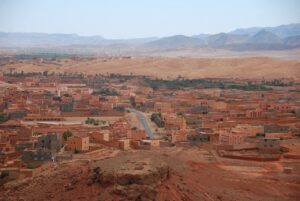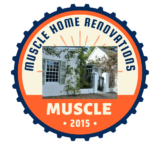
To qualify for a housing subsidy in South Africa, applicants must be South African citizens or permanent residents, over 18 years old, and earn a household income between R3,501 and R22,000 per month.
They must also be first-time homebuyers who do not currently own property or have previously benefited from a government housing subsidy. Priority is often given to vulnerable groups such as the elderly, disabled, and women-headed households.
In South Africa, housing subsidies are a critical means for many citizens to achieve the dream of owning a home. However, not everyone qualifies for this assistance. If you’re wondering who qualifies for a housing subsidy in South Africa, you’ve come to the right place. This article will guide you through the eligibility criteria, the different types of subsidies available, and how to apply for one.
Understanding Housing Subsidies in South Africa: Eligibility Criteria and Application Process
Housing subsidies in South Africa are a critical component of the government’s strategy to provide affordable housing to low- and middle-income households.
These subsidies aim to bridge the gap between the need for decent housing and the ability of citizens to afford it.
Understanding who qualifies for a housing subsidy is essential for any South African looking to secure a home through government assistance. In this comprehensive guide, we will delve into the eligibility criteria, types of subsidies available, and the application process.
Introduction to Housing Subsidies in South Africa
Housing subsidies are financial aids provided by the South African government to assist citizens in acquiring housing. These subsidies are primarily targeted at low-income individuals or families who cannot afford to buy or build a house on their own. The ultimate goal is to ensure that all South Africans have access to adequate housing, as enshrined in the Constitution.
Key Eligibility Criteria for Housing Subsidies
To qualify for a housing subsidy in South Africa, applicants must meet several specific criteria. These requirements ensure that the subsidies reach those who need them most.
1.Income Bracket:
- Applicants must fall within a specific income range, typically referred to as the “gap market”. This range is generally for households earning between R3,501 and R22,000 per month.
- Those earning less than R3,500 per month are often eligible for a fully subsidized house, whereas those in the higher bracket may receive partial subsidies to help with homeownership costs.
2.South African Citizenship or Permanent Residency:
- Only South African citizens or individuals with permanent residency status are eligible to apply for housing subsidies.
- Proof of citizenship or permanent residency must be provided during the application process.
3.Age Requirement:
- Applicants must be 18 years or older. There is no upper age limit for subsidy eligibility, but the applicant must be of legal age to enter into a contract.
4.Marital Status and Dependents:
- While single individuals can apply, those who are married or have dependents are often prioritized. This is because the government aims to support families in need of stable housing.
5.First-Time Home Buyer:
- The subsidy is typically available to first-time home buyers. Applicants should not have previously benefited from a government housing subsidy or owned property in South Africa.
6.Property Ownership:
- Applicants should not currently own property or have previously received a government housing subsidy. The goal is to assist those who do not have any property to their name.
7.Housing Need:
- The government prioritizes those who are genuinely in need of housing. This means that applicants must demonstrate a need for housing, such as living in overcrowded conditions or being homeless.
8.Special Groups:
- Special consideration is often given to vulnerable groups such as the elderly, disabled individuals, and women-headed households. These groups may receive priority when subsidies are allocated.
Types of Housing Subsidies Available in South Africa
The South African government offers various types of housing subsidies, each designed to address different housing needs and income levels.
1.Finance Linked Individual Subsidy Programme (FLISP):
2.Breaking New Ground (BNG)
Programme:
- Also known as the RDP housing scheme, the BNG program provides fully subsidized houses to low-income households earning below R3,500 per month.
- These houses are typically built by the government and allocated to qualifying individuals or families.
3.Rural Housing Subsidy:

- Designed for individuals living in rural areas or on tribal land. This subsidy allows beneficiaries to build their homes using traditional or alternative construction methods.
- The subsidy is often given in the form of building materials rather than cash.
4.Consolidation Subsidy:
- This subsidy is for individuals who already own a serviced plot but need financial assistance to build a house.
- The plot must have basic services like water and sanitation for the applicant to qualify.
5.Institutional Subsidy:
- This subsidy is available to housing institutions that provide rental housing to low-income individuals. The institutions must be registered with the government and meet specific criteria.
- The subsidy helps to keep rental costs affordable for tenants.
6.Military Veterans’ Housing Assistance:
- This subsidy is specifically for military veterans who do not have access to adequate housing.
- The veterans must meet specific criteria, including income thresholds and proof of service, to qualify.
Application Process for Housing Subsidies in South Africa
Applying for a housing subsidy in South Africa involves several steps, and it’s important to follow them carefully to ensure eligibility and success.
1.Preparation of Necessary Documents:
- Applicants must gather essential documents, including a South African ID, proof of income, and evidence of marital status (if applicable).
- For those applying under the Finance Linked Individual Subsidy Programme (FLISP), a critical requirement is proof of home loan approval from a recognized financial institution. This demonstrates that you can afford the home purchase with the help of the subsidy.
- Additional documents may include marriage certificates (for married applicants), birth certificates of dependents, proof of residency (such as utility bills), and an affidavit for cohabiting partners if not married.
2.Determine the Type of Subsidy:
- Identify which subsidy you qualify for based on your income, location, and housing needs. For example, if you are a first-time homebuyer with a steady income falling within the FLISP range, this would be your target subsidy.
- For low-income earners (below R3,500 per month), the Breaking New Ground (BNG) or RDP housing might be more suitable.
3.Visit the Local Housing Office:
- Applicants must visit their nearest municipal housing office or the Department of Human Settlements office to obtain and submit the application forms. Some provinces may also allow online applications, but physical visits are often required to verify documents.
- During this visit, you can get assistance from housing officers who can guide you through the application process and ensure all necessary information is provided.
4.Complete the Application Form:
- Fill out the application form with accurate and honest information. Any discrepancies or false information could lead to your application being rejected.
- Be clear about your current housing situation, financial status, and the type of housing assistance you are seeking.
5.Submit the Application:
- After completing the application form and attaching all required documents, submit your application at the housing office. Ensure you receive a receipt or confirmation of submission.
- Depending on the type of subsidy, there may be different processing times. For example, the FLISP subsidy often requires proof of bond approval, so timing is critical if you are purchasing a property.
6.Wait for Assessment and Approval:
- After submission, your application will go through an assessment process where your eligibility will be thoroughly reviewed. This includes verifying your income, housing need, and whether you have previously benefited from a government subsidy.
- If additional information or documents are required, the housing office will contact you. Ensure your contact details are up-to-date to avoid delays
7.Approval and Allocation:
- Once your application is approved, you will be notified by the housing office. For BNG/RDP houses, this might mean being placed on a waiting list until a house becomes available.
- For FLISP or other purchase-related subsidies, you will receive the subsidy amount, which will be directly applied to the home loan or used to cover part of the purchase price.
8.Completion and Move-In:
- After approval and allocation, the final steps involve completing any remaining paperwork, such as signing the title deed or finalising the home loan.
- Once all legalities are in place, you can move into your new home. For subsidised housing like BNG, the house is often ready for occupation upon allocation
Challenges and Considerations
While the housing subsidy programs in South Africa provide essential support to many citizens, there are challenges and important considerations applicants should be aware of:
1.Lengthy Waiting Periods:
- Particularly for BNG/RDP housing, there can be long waiting periods due to high demand and limited availability of housing units. Some applicants have waited several years for allocation.
2.Geographic Availability:
- The availability of subsidies and housing projects can vary significantly across different provinces and municipalities. Urban areas might have more options but also higher demand.
3.Limited Awareness and Accessibility:
- Many eligible citizens may not be fully aware of the subsidy options available to them or how to apply. It’s crucial to seek information from official sources and housing offices to understand your options.
4.Financial Literacy:
- For FLISP and other finance-linked subsidies, understanding how home loans work and managing credit is essential. Applicants must be financially literate to navigate the home-buying process successfully.
5.Quality of Subsidized Housing:
- While the government strives to provide adequate housing, the quality and size of BNG/RDP houses can sometimes be a concern. Beneficiaries should inspect properties where possible before finalization.
6.Ongoing Costs:
- Even with a subsidy, owning a home comes with ongoing costs such as maintenance, utilities, and rates. Applicants should budget for these expenses to avoid financial strain.
The Impact of Housing Subsidies on South African Society
Housing subsidies have a profound impact on South African society. By enabling homeownership and improving living conditions, these subsidies contribute to social stability, economic growth, and the reduction of inequality. Here’s how:
1.Reduction of Informal Settlements:
- By providing access to formal housing, subsidies help reduce the number of people living in informal settlements, which often lack basic services and infrastructure
2.Economic Empowerment:
- Homeownership is a key asset that can lead to wealth accumulation. Subsidies make it possible for low- and middle-income families to enter the property market, creating long-term financial security.
3.Improvement of Living Conditions:
- Subsidized housing often comes with access to better living conditions, including improved sanitation, electricity, and water. This enhances the quality of life for recipients
4.Social Cohesion:
- By reducing the housing gap and addressing inequalities in access to housing, subsidies contribute to social cohesion. Families in secure housing are more likely to invest in their communities and contribute to a stable society.
5.Support for Vulnerable Populations:
- Special focus on vulnerable groups such as the elderly, disabled, and women-headed households ensures that those most in need receive assistance, promoting inclusivity and equity.
Conclusion
Housing subsidies in South Africa play a critical role in making homeownership accessible to those who might otherwise be unable to afford it. These subsidies are not just financial aids; they are pathways to better living conditions, financial stability, and social inclusion.
Understanding the eligibility criteria, the types of subsidies available, and the application process is essential for anyone seeking to benefit from these programs. While challenges exist, the potential benefits of securing a housing subsidy can be life-changing, offering a secure and stable home environment for countless South African families.
For those considering applying, it’s important to gather all necessary information, prepare your documents, and follow the application process carefully. Whether you’re aiming to purchase a home through FLISP or looking for a fully subsidized BNG house, the right subsidy can make the dream of homeownership a reality.
Do you have a home building or renovation project that needs urgent attention? Contact us now at Muscle Home Renovations Pty Ltd. We have a team of experienced building contractors that delivers exceptional results beyond your expectation.
Cell:073271184
